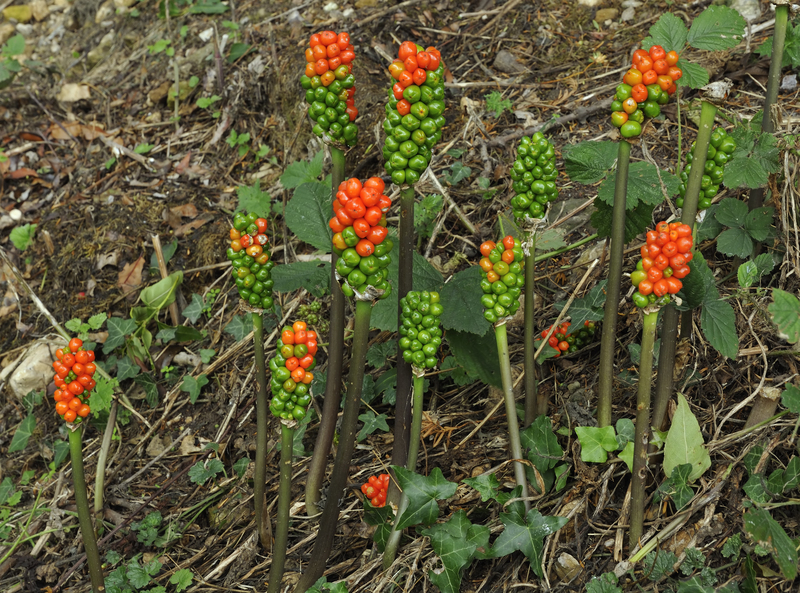Ensuring Your Garden's Endurance Through Storms
Posted on 02/09/2025
Ensuring Your Garden's Endurance Through Storms
Stormy weather can wreak havoc on the most beautiful gardens, but with the right preparation, you can safeguard your outdoor sanctuary. This comprehensive guide reveals how to storm-proof your garden, enhance resilience, and ensure your gardening efforts stand the test of wind, rain, and hail.
Why Focus on Garden Resilience to Storms?
Storms are becoming increasingly frequent and intense due to changing climate patterns. Whether it's high winds, torrential downpours, or hail, gardens face numerous threats that can undo months or even years of hard work. Ensuring your garden's endurance through storms isn't just about protecting your investment; it's about preserving plant health, preventing soil erosion, and supporting your local ecosystem. By incorporating storm-proof garden strategies, you create a robust landscape able to thrive even after severe weather.

Assessing the Storm Vulnerability of Your Garden
The first step to shoring up your garden is understanding its weaknesses. Consider the following questions:
- Location: Is your garden exposed to prevailing winds? Are there areas prone to flooding or waterlogging?
- Plant Selection: Are your current plants susceptible to storm damage such as snapped stems or uprooting?
- Soil Type: Does your soil retain water or drain quickly, possibly leading to erosion?
- Structures: Are fences, trellises, greenhouses, and sheds solidly anchored?
Knowing where your garden stands provides a roadmap for targeted improvements that foster long-lasting garden endurance through storms.
Storm-Proof Garden Design Principles
A well-designed garden can mitigate the impact of storms and ensure swift recovery. Integrate these design philosophies for lasting protection:
Strategic Shelter Placement
Planting windbreaks or barriers is highly effective. Tall, dense shrubs and trees on the windy side of your property can break up gusts and prevent wind tunnel effects. Opt for plants like:
- Holly (Ilex spp.)
- Leyland cypress (Cupressus x leylandii)
- Privet (Ligustrum spp.)
Tip: Mix species for greater disease resistance and biodiversity.
Water Management Techniques
Heavy rainfall threatens gardens with flooding and erosion. Effective drainage is key for securing your garden's survival through storms. Consider:
- Raised beds: Provide effective drainage and protect plant roots
- French drains: Channels redirect excess water away from plantings
- Permeable pathways: Gravel or mulch paths soak up rain, preventing runoff
Integrate rain gardens on the lowest parts of your yard to capture runoff and recharge groundwater, while showcasing resilient native plants.
Structural Support and Anchoring
From trellises to greenhouses, supporting structures can become hazards if not properly secured. Use these tactics for fortifying garden structures against storms:
- Deep-set posts: Anchor posts at least 18-24 inches deep, using concrete if necessary
- Cross-bracing: Add diagonal supports to fences and pergolas to resist wind forces
- Staking plants: Use stakes and ties for taller perennials and young trees, but allow some flex for natural movement
- Secure sheds and greenhouses: Use anchor kits or weighted bases and regularly check for loose panels
Selecting Storm-Resilient Plants
Plant choice is crucial for ensuring your garden's endurance through storms. Some varieties naturally withstand harsh weather better than others. When selecting plants, look for:
- Deep root systems: Trees like oaks and perennials such as daylilies won't uproot easily
- Flexible stems: Bamboo and grasses bend rather than snap
- Native species: Plants adapted to your local climate inherently offer greater resilience
- Salt and wind tolerance: For coastal gardens, select tough shrubs such as sea buckthorn (Hippophae rhamnoides)
Research your USDA Hardiness Zone and choose species proven to thrive despite regional weather extremes.
Planting Techniques for Endurance
Planting for storm resilience isn't just about the species--it's about how you plant. Follow these guidelines:
- Plant densely: Grouping plants together enables mutual protection from wind and minimizes soil erosion
- Mulch generously: Thick mulch layers reduce water runoff, keep roots cool, and prevent soil compaction from hail
- Stagger heights: Layer taller species behind smaller ones to create natural wind barriers
- Maintain tree health: Prune dead or crossing branches annually to minimize wind breakage
Soil Health and Storm Protection
Maintaining strong soil structure is key to long-term garden endurance through storms. Healthy soil absorbs water, anchors roots, and prevents erosion. Employ these soil-boosting methods:
Organic Amendments
- Compost: Increases organic matter and enhances soil's ability to hold moisture without waterlogging
- Cover crops: Seasonal plantings like clover shield soil from erosion and add nutrients
- Avoid compaction: Restrict foot traffic post-storm to prevent destroying soil structure
Landscaping Against Erosion
- Contour the ground: Gentle slopes, terraces, and swales slow water and prevent soil loss
- Groundcovers: Low-growing, mat-forming plants hold soil together with dense root systems--for example, creeping thyme or ajuga
Preparing for an Impending Storm
When a storm is forecast, prompt actions can make the difference between minor setbacks and major losses. Here's how to proactively secure your garden's endurance through storms:
- Tidy up: Remove dead leaves, branches, and unsecured items that could become dangerous projectiles
- Water in advance: Hydrated plants withstand wind stress better, but avoid overwatering
- Stake vulnerable plants: Firmly stake new or tall plants to help them remain upright
- Protect delicate plants: Cover with cloches, buckets, or horticultural fleece to shield from hail and wind
- Secure structures: Double-check greenhouses, gates, and water features for loose fixtures
Post-Storm Recovery for a Resilient Garden
How you react after a storm is essential to restoring your garden's endurance. Use the following checklist to help your landscape bounce back:
1. Assess the Damage
- Walk through your garden and take note of damaged plants, toppled structures, and eroded areas.
- Photograph for records or insurance claims.
2. Clean Up and Remove Hazards
- Prune broken or split branches back to healthy wood.
- Remove uprooted or dead plants to prevent pests and disease.
- Dispose of debris safely and compost where appropriate.
3. Restore and Replant
- Replant or stake partially uprooted specimens if the roots are still intact.
- Fill in eroded soil and top up mulch layers to stabilize surfaces.
- Rethink plant choices in areas hit hardest and upgrade to storm-hardy varieties if necessary.
4. Monitor Watering
- Check soil moisture--storms can saturate soil or, if windy, leave roots dry due to rapid evaporation.
- Resume irrigation carefully, ensuring you don't overwater plants already stressed by flooding.
5. Fertilize Thoughtfully
- Wait a few days before fertilizing to allow plants to recover from shock.
- Use an organic, slow-release fertilizer to encourage new growth.
Innovative Tools for Storm-Enduring Gardens
Modern gardening technology can play a big role in ensuring your garden's endurance through storms. Here are some tools and products to consider:
- Soil moisture sensors: Help you optimize watering before and after storms
- Weather apps: Stay informed about local storm alerts so you can prepare in advance
- Wind sensors: Activate windbreak systems or retractable structures automatically
- Smart irrigation systems: Adjust watering routines post-storm for efficient recovery
Common Mistakes to Avoid When Storm-Proofing Your Garden
Even experienced gardeners can overlook critical steps when preparing for severe weather. For truly storm-resilient gardening, avoid these errors:
- Skipping annual pruning: Overgrown trees are more likely to break in storms
- Planting weak species in exposed spots: Always position delicate plants in sheltered areas
- Neglecting drainage: Without proper drainage, even the healthiest garden can be undone by a single downpour
- Forgetting to check structures: Regularly inspect all supports, fences, and sheds for weakness or rot
- Using heavy mulches on slopes: Thick bark chips on steep grounds can slide and expose soil--stick to shredded bark or groundcover plants for such areas
Planning for the Future: Building Long-Term Garden Resilience
Acute readiness is important, but the most resilient gardens are those designed with the future in mind. Ensure your garden's endurance through storms with these additional strategies:
- Continue soil improvement: Add organic matter regularly and experiment with different mulch options
- Rotate crops and plants: Avoid growing the same species in one spot year after year to prevent pest buildup and maintain soil health
- Promote biodiversity: A diverse garden is more resilient to all forms of stress, including weather extremes and diseases
- Educate yourself: Keep learning about new storm-resistant plant varieties and gardening methods
- Connect with your community: Share storm-resilient gardening tips and resources with local gardeners to collectively strengthen neighborhood green spaces

Frequently Asked Questions About Storm-Resistant Gardening
What is the best way to protect delicate flowers during a storm?
Cover delicate flowers with buckets, plant domes, or horticultural fleece before a storm arrives. Choose temporary, breathable covers to prevent overheating if the weather is warm.
Which types of mulches are best for storm-prone gardens?
Opt for shredded bark, pine needles, or compost-based mulches. These stay in place during heavy rain better than large bark chips or gravel, and they help prevent erosion while nourishing the soil.
Can garden design really make a difference against storms?
Absolutely. Thoughtful garden layout--including windbreaks, raised beds, and natural contours--greatly reduces storm damage risk. Pairing design with resilient plant choices offers maximum protection.
Are native plants always the most storm-resistant?
Not always, but native plants are generally well-adapted to local weather. Research their specific storm tolerance, as some natives may still require added shelter depending on your site's exposure.
Conclusion: Creating a Storm-Resilient Oasis
Ensuring your garden's endurance through storms combines smart planning, resilient plant choices, sound construction, and ongoing vigilance. By understanding your garden's vulnerabilities and implementing storm-resilient strategies, you will safeguard your landscape for years to come--no matter what the weather throws your way. Embrace thoughtful preparation for peace of mind and a flourishing, storm-hardy garden that rebounds stronger after every challenge.

